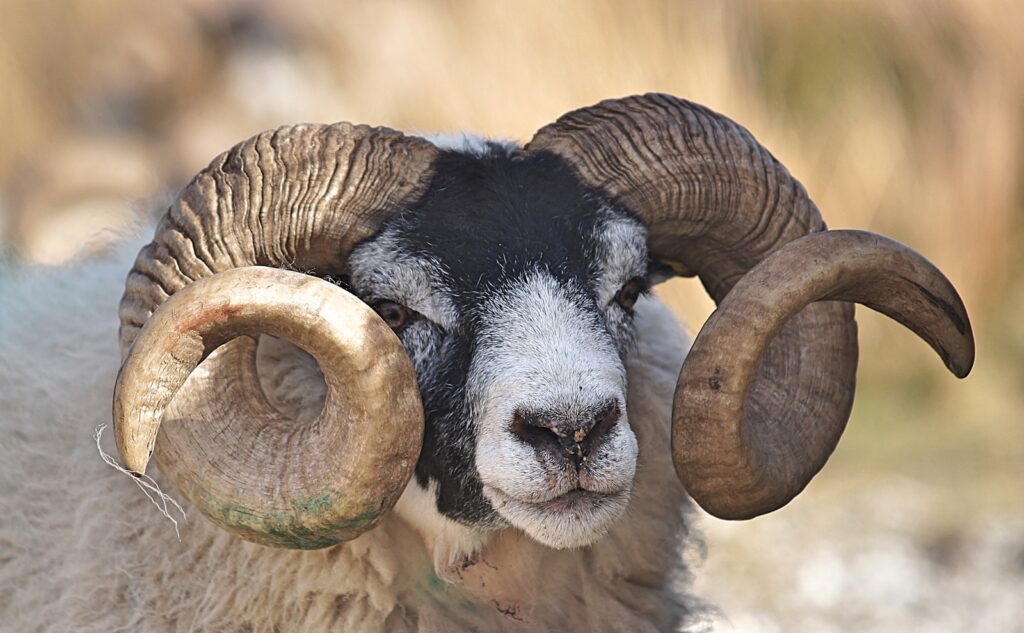Prehistoric mammals with enormous horns and headgear represent some of the most fascinating evolutionary developments in the fossil record. From the massive curved tusks of the woolly mammoth to the elaborate antlers of the Irish elk, these impressive cranial structures have captivated paleontologists and the public alike. But what purpose did these sometimes unwieldy structures serve? Was their development driven purely by sexual selection, or did they serve multiple functions that helped these magnificent creatures survive and thrive?
This article explores the evolutionary reasons behind the development of giant horns in prehistoric mammals and what these structures tell us about ancient ecosystems and evolutionary pressures.
The Evolutionary Arms Race: Sexual Selection

Sexual selection represents one of the most powerful evolutionary forces behind the development of elaborate horns and antlers in prehistoric mammals. Much like modern deer and antelope, many prehistoric mammals likely used their impressive headgear to compete for mates in dramatic showdowns with rival males. The prehistoric Irish elk (Megaloceros giganteus), which wasn’t actually an elk but rather a giant deer, sported antlers that spanned up to 12 feet across—the largest antlers of any known cervid, ancient or modern.
These enormous structures evolved not primarily for defense against predators but as advertisements of genetic fitness. Males with larger, more symmetrical antlers demonstrated their ability to gather enough resources to grow and carry such cumbersome headgear while still remaining healthy enough to mate, signaling to females that they possessed superior genes worth passing to offspring.
Brontotherium: Battering Rams of the Oligocene
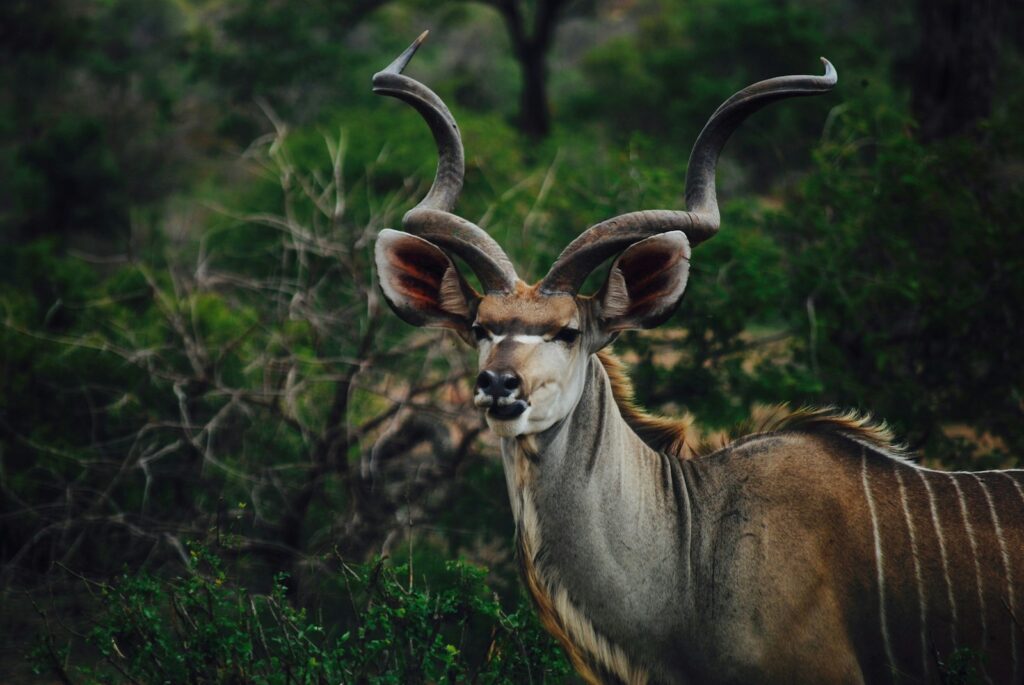
The Brontotheres, sometimes called titanotheres, represent a fascinating example of horn evolution in prehistoric mammals. These rhinoceros-like creatures of the Eocene and early Oligocene epochs (approximately 56-34 million years ago) developed distinctive Y-shaped bony protrusions on their snouts. Particularly impressive was Brontotherium, whose massive paired horn-like structures grew up to two feet in length. Paleontologists have long debated their function, but evidence suggests these structures were likely used in head-pushing contests between males, similar to modern bighorn sheep.
The flattened shape of these “horns” would have distributed force effectively during pushing matches, while their position at the front of the skull minimized risk of brain injury during confrontations. Interestingly, fossil evidence shows that female brontotheres also possessed these structures, though typically smaller than males, suggesting they may have had additional functions beyond sexual competition.
Uintatherium: The Prehistoric Dagger-Head
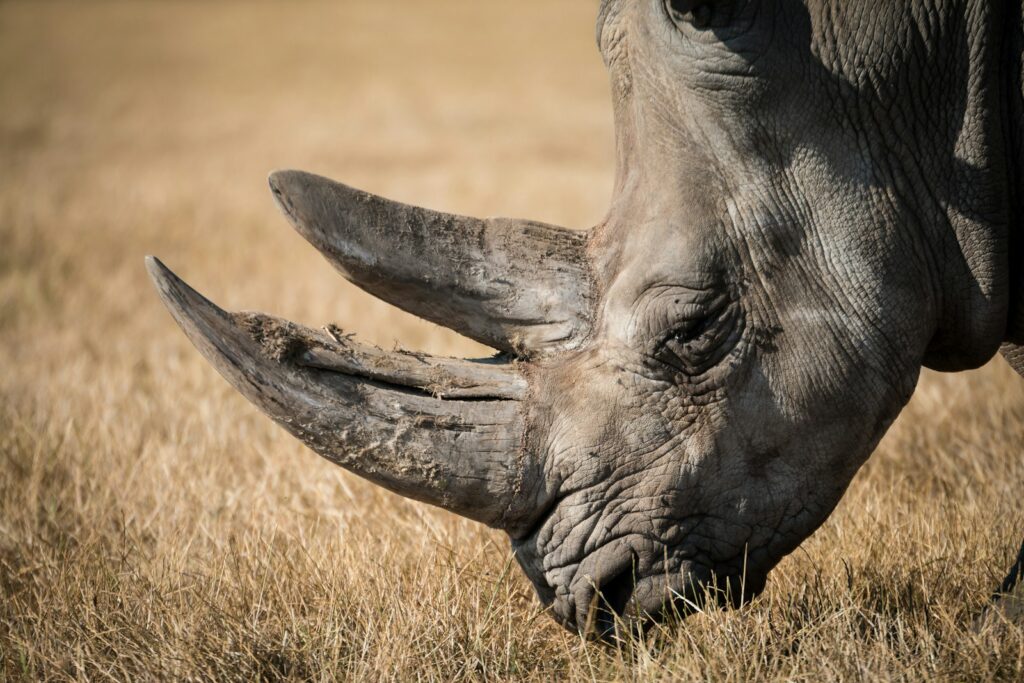
Among the most bizarre-looking prehistoric mammals was Uintatherium, a rhino-sized herbivore that roamed North America during the Eocene epoch (approximately 56-34 million years ago). This peculiar creature sported not just one but six horn-like protrusions on its skull, along with large upper canine teeth that resembled daggers. The horns weren’t true horns like those of modern cattle or antelope—they were instead bony outgrowths of the skull covered by skin rather than keratin sheaths.
Sexual dimorphism in Uintatherium was pronounced, with males possessing much larger cranial protuberances and canines than females, strongly suggesting these features played a role in mate competition. The placement of these “horns” across the skull likely created an intimidating display for rivals, while possibly also protecting vital areas during male-to-male combat. Some paleontologists have suggested the unique arrangement might have also served to deter predators, presenting multiple points that would make attacking from any angle dangerous.
Megacerops: The North American Giant

Megacerops, another member of the brontothere family, developed some of the most impressive horn-like structures among prehistoric mammals. Living approximately 38-33 million years ago in what is now North America, these massive animals stood over 8 feet tall at the shoulder and featured a distinctive pair of blunt, laterally flattened horns that merged at the base to form a Y-shape. Unlike true horns, these structures were solid bone outgrowths from the skull, reaching lengths of up to two feet in the largest males.
The horn structure evolved to withstand tremendous lateral forces, suggesting they were used primarily for shoving contests between rival males rather than for piercing or goring. Fossil evidence indicates that Megacerops lived in social groups, which would have provided additional opportunities for dominance displays using these impressive cranial structures. The evolution of these massive structures represents a classic example of sexual selection driving the development of features that might otherwise seem impractical from a pure survival perspective.
Woolly Mammoth Tusks: More Than Just Weapons

The iconic curved tusks of the woolly mammoth (Mammuthus primigenius) represent one of the most recognizable horn-like structures in prehistoric mammals, though technically, they were modified incisors rather than true horns. These magnificent structures could reach lengths of over 15 feet and weigh more than 200 pounds in the largest males, creating an impressive display that served multiple purposes beyond sexual selection.
Unlike many horn structures that evolved primarily for male competition, mammoth tusks served crucial survival functions, including digging through snow to access vegetation during harsh Ice Age winters. The tusks also functioned as formidable weapons against predators like saber-toothed cats and early human hunters.
Interestingly, mammoth tusks contain annual growth rings similar to trees, allowing paleontologists to study seasonal growth patterns and determine the age and health conditions of individual mammoths. Some fossils show evidence of tusk injuries that healed during the animal’s lifetime, demonstrating how vital these structures were to mammoth survival and social interactions.
Synthetoceras: The Bizarre Fork-Horned Mammal

Perhaps one of the strangest horn configurations in prehistoric mammals belonged to Synthetoceras, an artiodactyl that lived approximately 14-5 million years ago during the Miocene epoch. This deer-sized mammal possessed a unique Y-shaped horn projecting from its snout, with the base beginning between its eyes and the fork extending forward over its nose.
Males also had an additional pair of smaller horns above their eyes, creating a three-pronged arrangement unlike anything seen in modern mammals. The fork-shaped nasal horn likely evolved specifically for male-to-male combat, with the bifurcated tips potentially used to lock with an opponent’s horn during pushing contests. This unusual configuration might have allowed males to twist their heads during combat, potentially forcing competitors off balance.
Some paleontologists have suggested the elaborate design may have also served as a visual signal to females, advertising genetic quality through the symmetry and size of the horn structure. This bizarre adaptation illustrates how sexual selection can drive the evolution of highly specialized structures that might appear impractical from a pure survival standpoint.
Arsinoitherium: The Double-Horned Egyptian Giant
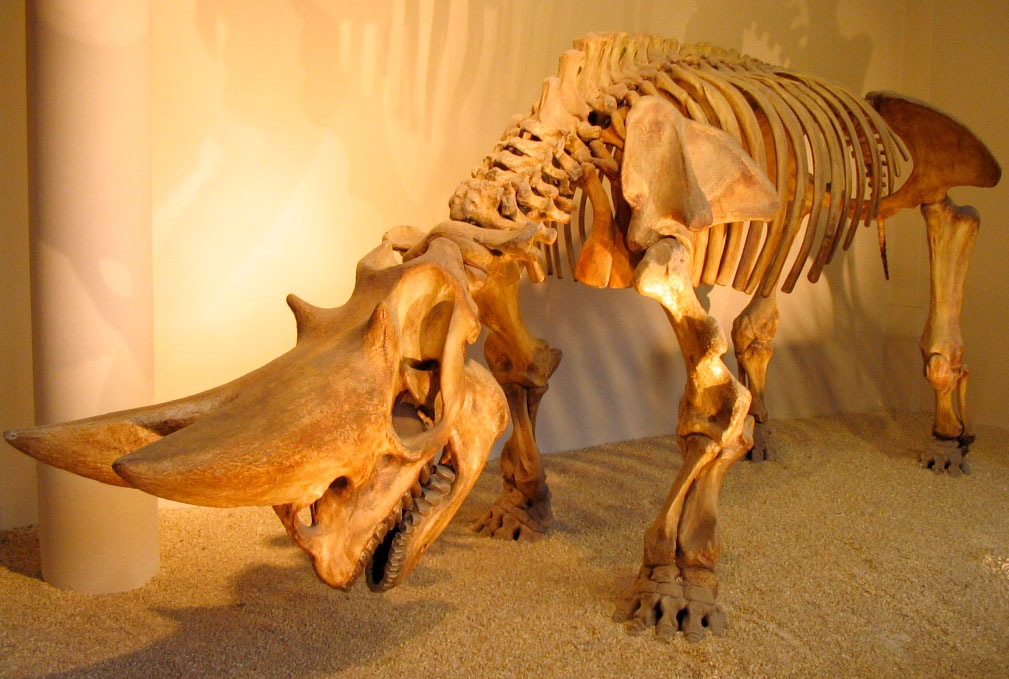
Arsinoitherium represents one of the most spectacular examples of horn development in prehistoric mammals. This rhinoceros-sized creature lived approximately 36-30 million years ago in what is now Egypt and featured a pair of massive, conical horns that grew side by side from its snout, reaching lengths of over two feet.
Unlike the horns of modern rhinos, which are composed of compressed keratin fibers, Arsinoitherium’s horns were solid bony outgrowths of the skull covered by skin, making them exceptionally strong and durable. The positioning of these enormous horns directly over the nasal cavity created resonating chambers that may have amplified vocalizations, potentially serving both for mate attraction and territorial warnings.
CT scans of fossil specimens reveal extensive blood vessel pathways within the horn structures, suggesting they may have also served a thermoregulatory function, helping these massive animals regulate body temperature in their warm climate. The impressive size and strength of these horns would have made the Arsinoitherium virtually impervious to predators, representing a powerful example of how horn structures could evolve for multiple simultaneous functions.
Predator Defense: Horns as Survival Tools

Image by Dennis Yu, via Unsplash
While sexual selection played a dominant role in the evolution of many prehistoric mammals’ horns, predator defense represents another crucial factor that shaped these impressive structures. The massive horns of creatures like Brontotherium and Arsinoitherium would have made them formidable opponents for any predator foolish enough to attack.
Fossil evidence from sites across North America and Eurasia shows that even the largest prehistoric predators, such as the enormous entelodont Daeodon (sometimes called the “terminator pig”), would have faced significant challenges when attempting to prey on well-armed herbivores. The positioning of horns often provided protection for vulnerable areas like the neck and face, while simultaneously serving as weapons that could inflict serious damage on attackers.
Some prehistoric mammals evolved horn structures that specifically protected their most vulnerable areas—the neck and throat—from predator attacks, similar to how the dewlap and horns of modern buffalo provide protection against lion attacks. This defensive function helps explain why some female prehistoric mammals also developed horn-like structures, albeit typically smaller than those of males, as predator defense would benefit both sexes equally.
Species Recognition: Horns as Identity Markers
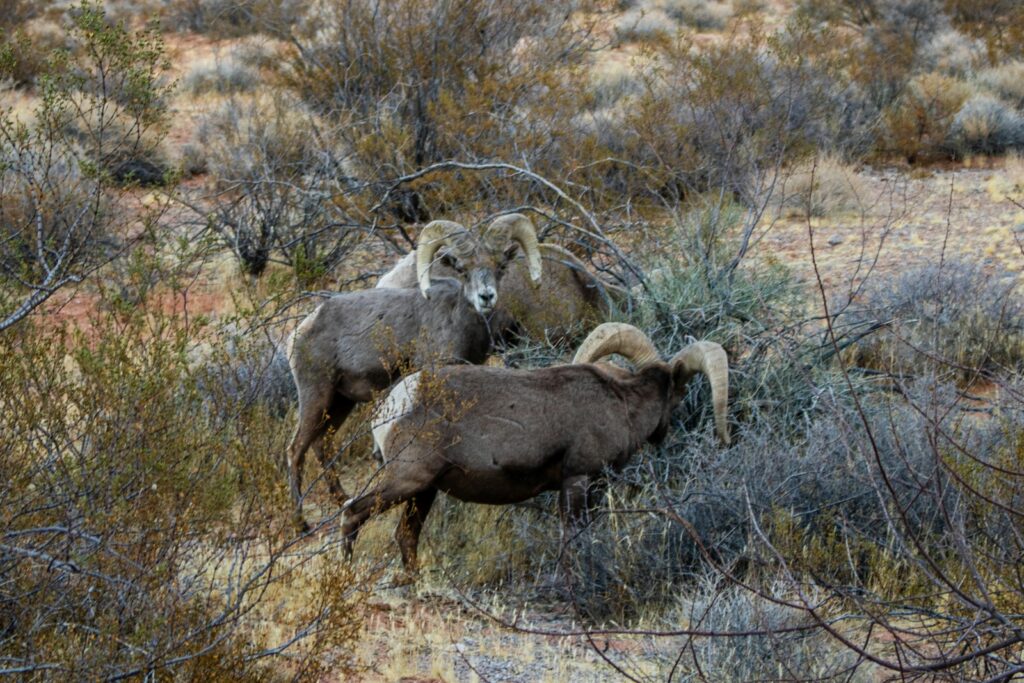
Beyond sexual selection and predator defense, the distinctive horn configurations of prehistoric mammals likely served important functions in species recognition. During periods of high mammalian diversity, such as the Eocene and Miocene epochs, multiple similar species often coexisted in the same habitats, creating evolutionary pressure for distinctive physical characteristics that would prevent hybridization between closely related species. The uniquely shaped horn of Synthetoceras, the massive paired horns of Arsinoitherium, or the elaborate bony protuberances of Uintatherium would have made these animals immediately identifiable to members of their own species, even from considerable distances.
This recognition function would have been particularly important during mating seasons when quickly identifying appropriate mates became crucial for reproductive success. Evidence from modern horned mammals supports this theory, as species with overlapping ranges often evolve distinctly different horn shapes and sizes that serve as visual markers of species identity. The extreme diversity of horn configurations seen in the fossil record may reflect an evolutionary arms race not just for sexual dominance but also for creating unmistakable species-specific silhouettes that prevented wasted energy on reproductive dead ends.
Costly Signals: Horns as Indicators of Genetic Fitness
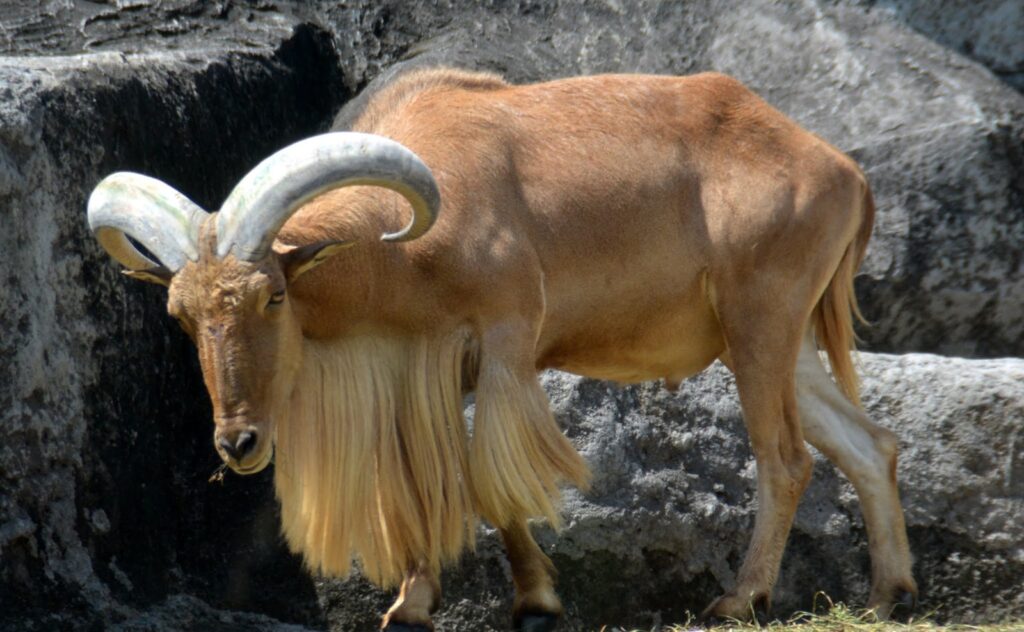
The development of enormous horns in prehistoric mammals represents a classic example of what evolutionary biologists call “costly signaling.” These enormous structures required significant resources to grow and maintain, creating substantial metabolic demands on the animals bearing them. The Irish elk provides perhaps the most dramatic example of this principle, as its colossal antlers require the annual production of up to 88 pounds of bone tissue in just a few months—an extraordinary metabolic feat. Only the healthiest, most genetically fit individuals could successfully grow symmetrical, well-formed horns or antlers while maintaining enough energy reserves for other essential activities like finding food and evading predators.
Females likely evolved preferences for males with the most impressive cranial ornaments precisely because these structures honestly advertised genetic quality. Fossil evidence from multiple species shows that horn and antler growth was sensitive to environmental conditions, with poorer nutrition resulting in smaller, less symmetrical structures. This sensitivity made these elaborate headgear reliable indicators of an individual’s ability to find sufficient resources even in challenging conditions—a trait that would benefit offspring through both genetic inheritance and the protection of a strong, healthy father.
Environmental Adaptations: Horns as Climate Responses
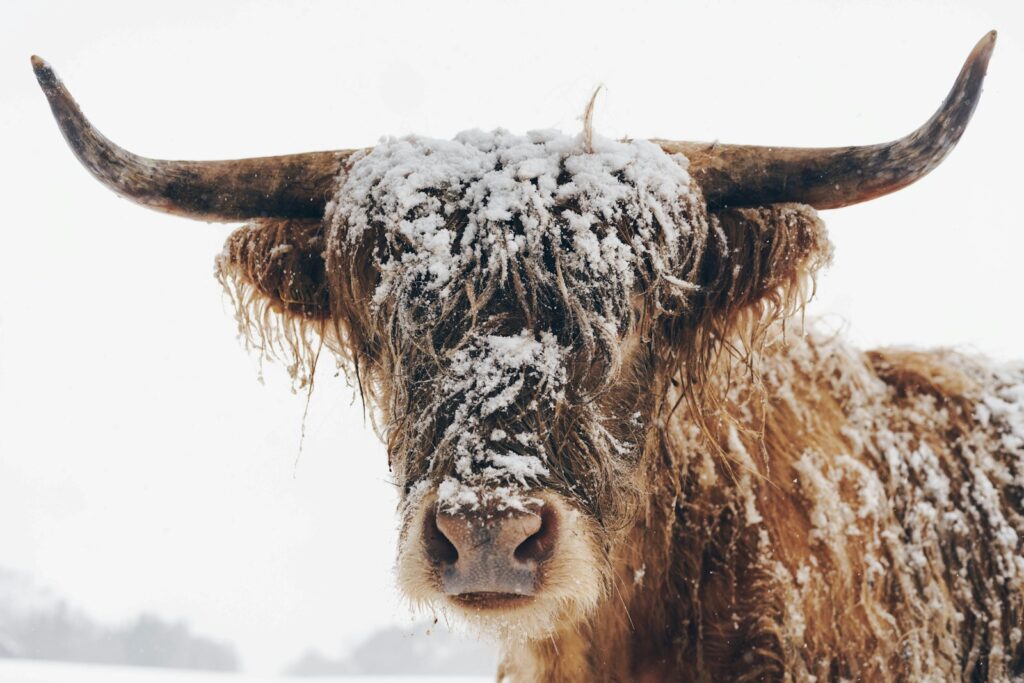
The evolution of elaborate horn structures in prehistoric mammals also reflects adaptations to specific environmental conditions. For instance, the enormous surface area of Irish elk antlers may have served a thermoregulatory function in addition to their role in sexual selection. By increasing blood flow to their massive antlers, these animals could potentially dissipate excess body heat during warmer seasons—a feature that would have been particularly valuable for a large-bodied mammal.
Conversely, some prehistoric mammals living in colder climates, such as certain extinct bison species, developed horns with less surface area relative to their body size, potentially reducing heat loss in frigid environments. The woolly mammoth’s massive tusks served crucial environmental functions beyond display, including clearing snow to access frozen vegetation during harsh Ice Age winters.
Fossil evidence shows wear patterns on mammoth tusks consistent with this snow-clearing behavior, reinforcing the multi-purpose nature of these structures. Climate fluctuations throughout the Cenozoic era likely influenced horn evolution, with paleontological data revealing correlations between global temperature shifts and changes in horn morphology across multiple mammalian lineages.
The Cost of Gigantism: When Horns Become Liabilities
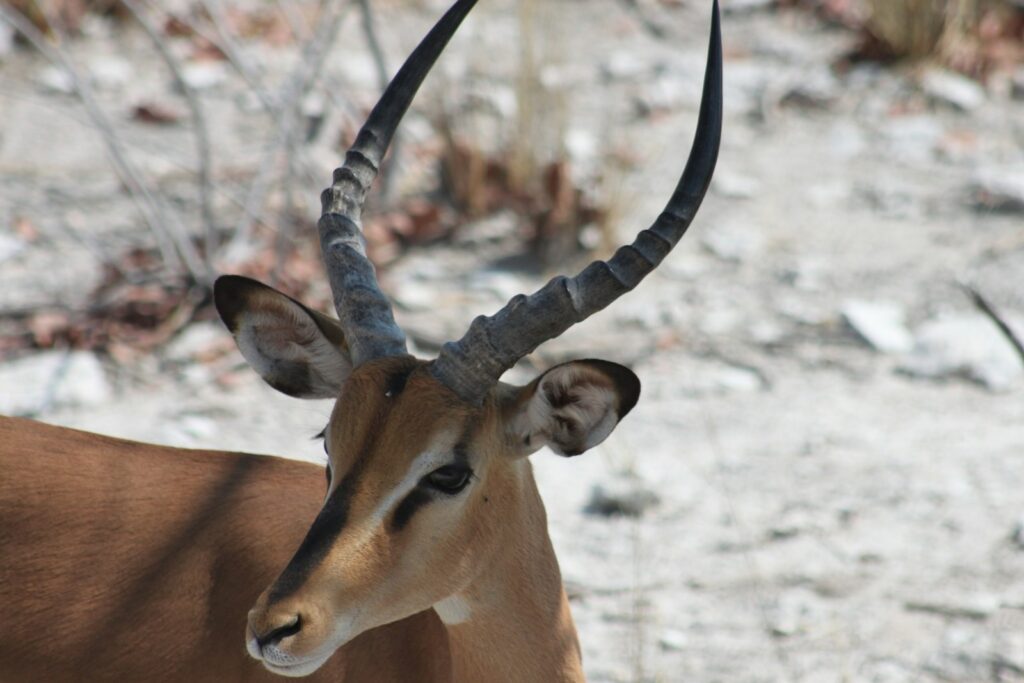
Image by MIGUEL GASCOJ, via Unsplash
Despite their evolutionary advantages, the extreme development of horns and similar structures sometimes became evolutionary liabilities for prehistoric mammals. The Irish elk represents a frequently cited example of evolutionary overspecialization, as its enormous antlers—spanning up to 12 feet—may have contributed to the species’ eventual extinction.
These massive structures required tremendous calcium and phosphorus resources to grow each year, potentially leaving males vulnerable to nutritional deficiencies when environments changed. The extinction of the Irish elk coincided with the end of the last Ice Age, when shifting vegetation patterns may have reduced access to the mineral-rich plants needed to support antler growth.
Similarly, some paleontologists have suggested that the elaborate horn structures of Uintatherium and Arsinoitherium created vulnerability to ecological changes, as these animals needed to consume enormous quantities of vegetation to support both their large body size and their cranial ornamentation. Archaeological evidence suggests that prehistoric human hunters may have specifically targeted impressively horned mammals, both for the practical resources they provided and possibly for trophy value, creating additional selection pressure against extreme horn development.
These examples highlight the delicate evolutionary balance between the reproductive advantages conferred by impressive horns and the survival challenges they sometimes created.
Modern Parallels: Lessons from Living Horned Mammals
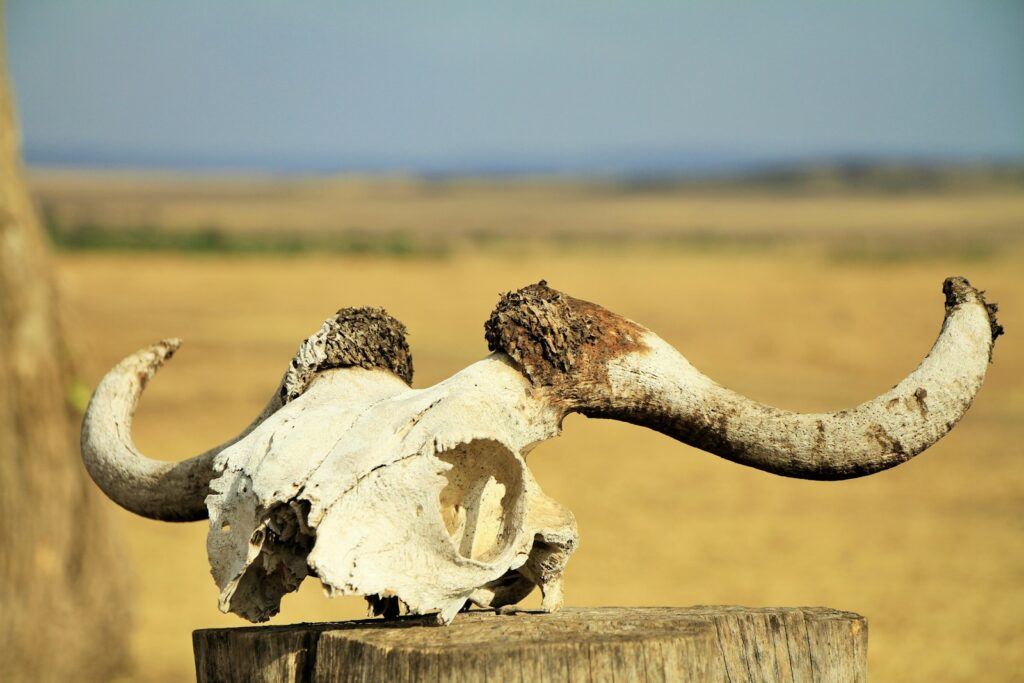
Image by Pawan Sharma, via Unsplash
Studying modern horned mammals provides valuable insights into the evolutionary forces that shaped their prehistoric counterparts. Contemporary species like rhinoceros, bighorn sheep, and various antelope demonstrate many of the same horn functions that likely operated in extinct species. Research on modern moose and elk shows that antler size strongly correlates with male reproductive success, supporting theories about sexual selection driving horn gigantism in prehistoric mammals.
Behavioral studies of modern rhinoceros reveal how horn structures can serve multiple simultaneous functions—from male competition to predator defense to manipulating vegetation. Perhaps most revealing are studies of island populations of modern horned mammals, which often evolve smaller horn sizes when predator pressure is reduced, suggesting that maintaining large horns carries significant costs that are only worthwhile when they provide survival or reproductive benefits.
Physiological research on modern species also confirms the metabolic demands of growing and maintaining large horns or antlers, supporting theories about these structures serving as honest signals of genetic fitness in prehistoric species. These modern parallels allow paleontologists to develop more nuanced understandings of how and why some prehistoric mammals evolved such spectacular cranial ornaments.
Conclusion

Image by Bas van Brandwijk, via Unsplash
The evolution of giant horns in prehistoric mammals represents a fascinating intersection of sexual selection, predator defense, species recognition, and environmental adaptation. These impressive structures tell a complex story of evolutionary pressures that shaped mammalian diversity throughout the Cenozoic era. While sexual selection clearly drove many cases of extreme horn development, the multifunctional nature of these structures helped justify their metabolic costs.
Understanding why prehistoric mammals evolved such spectacular headgear not only illuminates the past but also provides insights into evolutionary processes that continue to shape life on Earth today. As modern species face unprecedented environmental changes, the lessons from these prehistoric giants—including the potential dangers of evolutionary overspecialization—become increasingly relevant to conservation efforts and our understanding of adaptation in the face of changing conditions.

